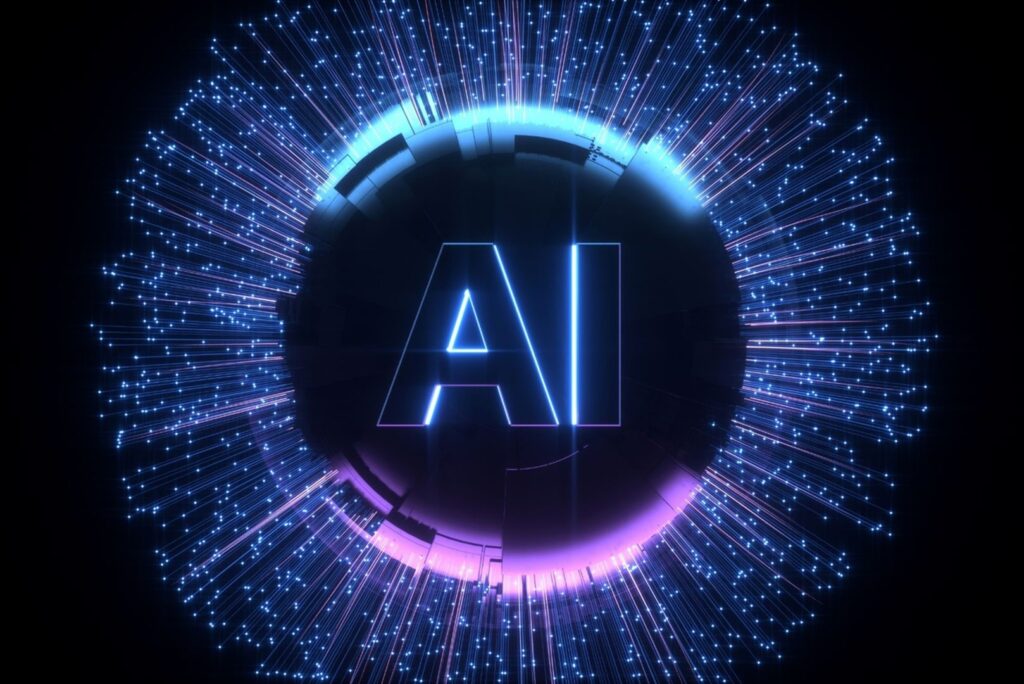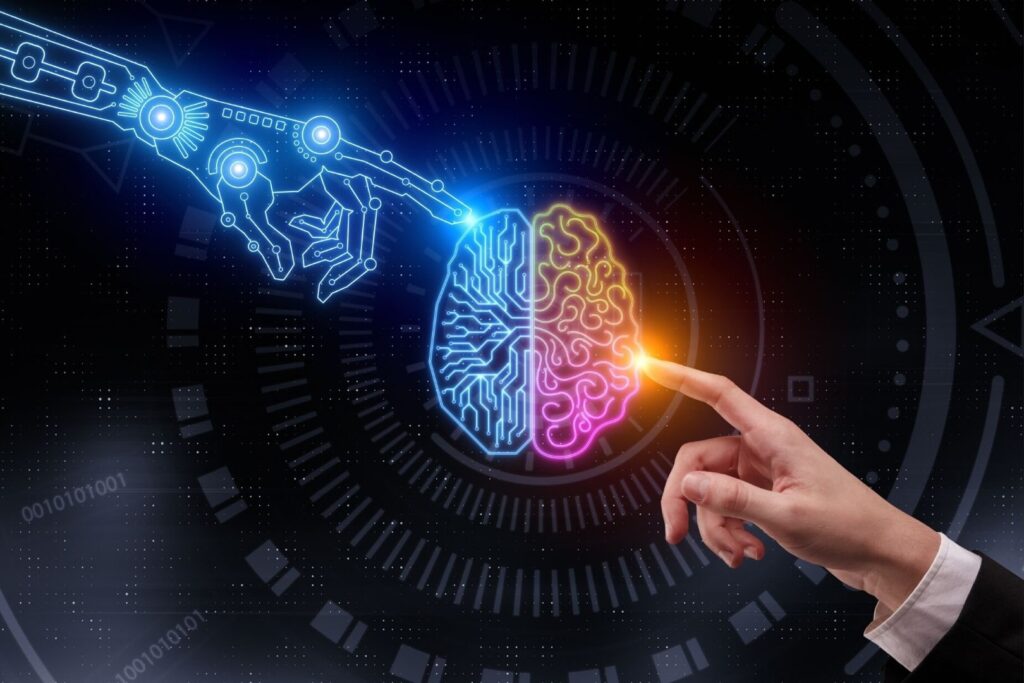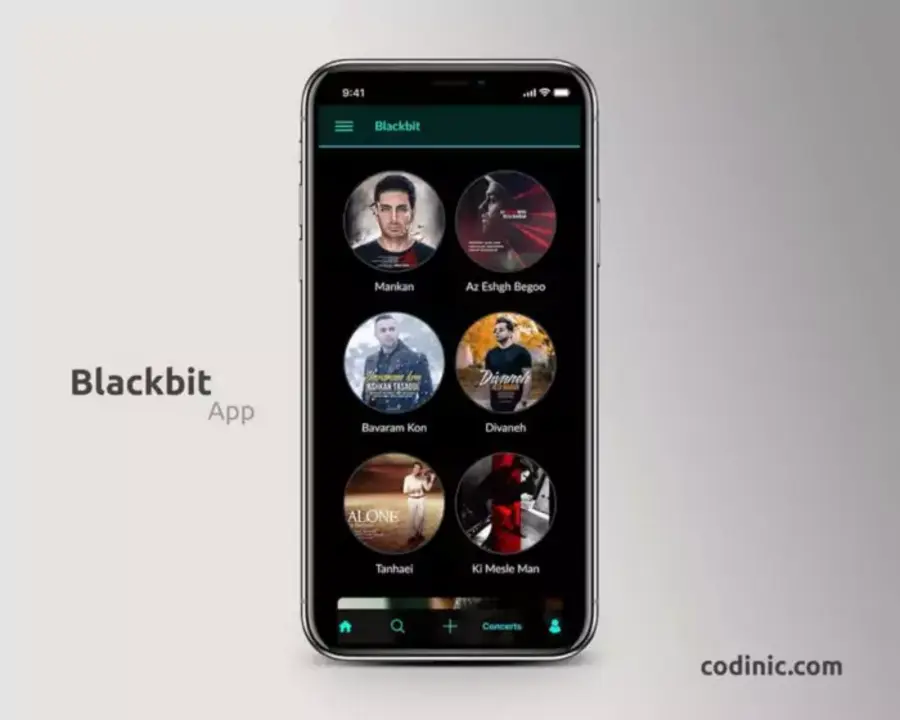Artificial Intelligence Integration in Mobile Applications

The Importance of Artificial Intelligence in Mobile Applications
Artificial intelligence is enabling mobile apps to transform from mere tools into intelligent assistants. Using AI, apps can understand user behavior, deliver personalized experiences, automate complex tasks and even make predictions. In addition to improving user satisfaction, it significantly increases the value and functionality of apps.
For example, in an e-commerce application, AI can make personalized product recommendations by analyzing a user’s past purchases, interests and browsing behavior. This is a much more effective and user-centric approach than providing a generic list of recommendations.
Benefits of Artificial Intelligence Integration
- Customization: Increases user engagement by delivering personalized content and experiences based on user preferences and behaviors.
- Efficiency and automation: Saves time for users and app developers by automating repetitive tasks. Customer service chatbots increase efficiency in areas such as automated data analysis and content creation.
- Improved decision making: Data analysis and machine learning algorithms enable more accurate and faster decision making. Recommender systems are vital in areas such as risk assessment and fraud detection.
- New features and functionalities: Artificial intelligence is enabling new features and functions to be integrated into mobile apps that were not possible before. Technologies such as image recognition, natural language processing and speech recognition are pushing the boundaries of applications.
- Competitive advantage: The integration of artificial intelligence creates a significant competitive advantage by differentiating apps from competitors. Innovative and smart applications attract more attention in the market and attract users.
Using Artificial Intelligence in Applications Today
Artificial Intelligence Integration in Mobile Apps is now rapidly becoming widespread in the world of mobile app development. It’s not just big tech companies anymore, small and medium-sized businesses have also started to integrate AI features into their apps. The increasing availability of cloud-based AI platforms and development tools is accelerating this trend. Today, it is possible to see examples based on artificial intelligence in almost every application category.
For example, in travel apps, AI can predict flight and hotel prices and create personalized itineraries. In education applications, AI enables personalization of course content according to the student’s learning speed and style. In music apps, AI can discover new songs and artists based on the user’s listening habits.
Types of Mobile Applications Developed with Artificial Intelligence
Artificial intelligence offers innovative solutions in various areas of mobile applications. Some common types of applications developed are:
Chatbots and Virtual Assistants (ChatGPT, Siri, Google Assistant)
Chatbots and virtual assistants are artificial intelligence applications that can interact with users in written or spoken form using natural language processing (NLP) technologies. They can be used for a variety of purposes such as customer service, information provision, task management and personal assistance.
ChatGPT: This is an advanced language model developed by OpenAI. It can answer complex questions, generate text, write code and perform various creative tasks through a text chat interface.
Siri (Apple): It is a voice-based virtual assistant built into iOS devices. It can understand the user’s voice commands, set appointments, send messages, search for information and control device functions.
Google Assistant (Google):
It is a virtual assistant available on Android devices and other platforms. In addition to Siri-like functions, it can access Google’s vast knowledge base and provide more personalized responses.
Uses in mobile apps include customer support, answering frequently asked questions, taking reservations, setting reminders, searching for information, and navigating apps.
Recommendation systems (Netflix, Spotify, E-Commerce Apps)
Recommender systems are artificial intelligence algorithms that make personalized content recommendations by analyzing users’ past behavior, preferences and other user data. They are used to improve the user experience in various areas such as entertainment (movies, music), retail (product recommendations), news and social media.
Netflix: Analyzes your viewing history and likes to provide you with personalized movie and TV series recommendations. It displays personalized content in categories such as “Suggestions for You” and “Popular”.
Spotify: It creates personal playlists (e.g. “Daily Mix”, “Discovery Weekly”) based on your listening habits and helps you discover new music.
Applications e-commerce (Amazon, Trendyol):
It shows you product recommendations based on your past purchases, the products you have viewed and the behavior of other users. Sections such as “Our picks for you” and “People who bought this product also bought this one” offer a personalized shopping experience.
Among the areas of use in mobile applications; product discovery, content recommendation, personalized marketing, increased user interaction, increased sales.

Image and Voice Recognition (Face Recognition, Speech Synthesis)
Image and voice recognition technologies enable artificial intelligence to understand and interpret visual and auditory data. These technologies bring important functions to mobile applications in terms of security, accessibility and interactivity.
Face recognition (Face ID): It is used to unlock smartphones, verify payments or provide secure access to apps.
Synthesis from speech to text: It is used for transcribing voice notes, transcribing voice commands or automatic captioning of live broadcasts. Google Voice Typing, Apple’s Dictation feature and various dictation apps use this technology.
Object detection:
It is used to automatically recognize and label objects (people, animals, vehicles, objects, etc.) in photos. Applications such as Google Lens and Bixby Vision can use this technology to provide information about objects in the image.
Uses in mobile applications include security (unlocking with facial recognition), accessibility (voice commands, transcription), photo and video analysis, augmented reality (AR) applications, visual search.
Health and Fitness Apps (Artificial Intelligence Based Nutrition and Exercise Plans)
Artificial intelligence is being used in health and fitness apps to provide personalized health tracking, recommendations and advice. AI algorithms can analyze users’ health data (activity level, dietary habits, sleep habits, etc.) to provide tailored exercise programs, nutrition recommendations and health tips.
Artificial Intelligence Based Nutrition Plans: It creates personalized recipes and nutrition plans taking into account the user’s food preferences, allergies and health goals. It offers features such as calorie tracking, macronutrient calculation and meal recommendations. Apps such as Goat, Kikifit, MyFitnessPal and Noom include AI-powered nutrition features.
AI-powered exercise plans: It creates personalized exercise programs by evaluating the user’s fitness level, goals and available equipment. It offers features such as exercise tracking, fitness correction and motivational messages. Apps such as Nike Training Club and Peloton use exercise features powered by AI.
Health monitoring and analysis:
It analyzes health data (heart rate, sleep patterns, activity level, etc.) collected from the wearable or app and provides insights into the user’s health status, identifies risks and makes recommendations. Apps such as Fitbit and Apple Health offer health tracking features powered by AI.
Among the areas of use in mobile applications; personal health tracking, fitness coaching, nutrition counseling, disease risk detection, medication reminders, mental health applications.

Automated Content Creation and Optimization (Blog Articles, Video Editing)
AI Integration in Mobile Apps can automatically create different types of content such as text, images and videos or optimize existing content. This speeds up the content creation process, reduces costs and delivers more personalized content experiences.
- Blog posts with artificial intelligence: It can automatically generate articles, blog posts or product descriptions based on a specific topic or keyword. Tools like Jasper and Copy.ai can use this technology to generate textual content.
- Video editing with artificial intelligence: It can automatically analyze videos to identify key moments, add music and create professional-looking videos. Apps like InVideo and Descript offer AI-powered video editing features.
- Content Optimization: Analyze existing content (text, images, video) and optimize it to improve SEO performance. It makes suggestions such as keyword suggestions, content structure optimization, readability improvements. Tools like Grammarly and SurferSEO provide content optimization based on artificial intelligence.
Among the areas of use in mobile applications; content marketing, social media management, e-commerce product descriptions, news applications, personalized content recommendations, translation services.
Advanced Security Solutions (Abnormal Behavior Detection, Fraud Detection)
Artificial intelligence can be used in a variety of ways to improve mobile app security. It can prevent unauthorized access by detecting anomalous behavior, detect fraudulent activity and protect user data.
- Abnormal behavior detection: Continuously monitor user behavior to detect unusual or suspicious activity. It generates security alerts by detecting account takeover attempts, unauthorized data access or malware activity.
- Fraud detection: It can detect and prevent fraud attempts (credit card fraud, fake accounts, bot activity, etc.) by analyzing payment transactions, account activity and other data. PayPal, banking apps and e-commerce platforms use AI-based fraud detection systems.
- Biometric authentication: It enhances security by verifying user identity through biometric methods such as facial recognition, fingerprint recognition or voice recognition. Banking applications, payment applications and enterprise security applications use this technology.
Among the areas of use in applications; account security, data security, payment security, authentication, unauthorized access prevention, malware detection.
How to Integrate Artificial Intelligence in Mobile Applications?
Artificial Intelligence Integration in Mobile Applications can be a complex process, but it can be accomplished successfully by following the right steps and using the appropriate technologies. Here are the basic steps:

Choosing the Right Artificial Intelligence Model
Machine learning or deep learning?
Artificial intelligence models generally fall into two main categories: machine learning (ML) and deep learning (DL). The choice depends on the application needs and the size of the dataset.
- Machine Learning (ML): Suitable for smaller datasets and simpler tasks. Includes classical algorithms (e.g. support vector machines, decision trees, random forests). Requires less computing power and can be trained faster. Ideal for recommender systems, spam filtering and basic classification tasks.
- Deep Learning (DL):
Selection criteria:
- Complexity of the task: ML for simple tasks, DL for complex tasks.
- Dataset size: ML for small datasets, DL for large datasets.
- Computing resources: ML for limited resources, DL for more resources.
- Development time and cost: ML is usually faster and cheaper, while DL can take longer and cost more.
Off-the-shelf AI APIs and Libraries or Custom Model Development?
There are two main approaches to AI Integration in Mobile Apps: using off-the-shelf solutions (APIs, libraries) or developing a custom model.
- AI API and Ready Libraries: Cloud-based AI platforms (Google Cloud AI, AWS AI, Microsoft Azure AI) and open source libraries (TensorFlow, PyTorch, scikit-learn) offer ready-to-use AI models and APIs. These solutions accelerate the development process, lower costs and reduce the need for expertise. Ideal for common AI tasks such as image recognition, natural language processing and translation.
- Development of customized models: If the needs of the application are very specific or off-the-shelf solutions do not deliver adequate performance, it may be necessary to develop a customized AI model. This approach requires more time, expertise and resources but can provide more personalized and optimized solutions. It is suitable for niche applications, high-precision tasks and creating competitive advantage.
Selection criteria:
- Application needs: Ready-to-use solutions for standard tasks, customized model for special tasks.
- Development time and budget: Out-of-the-box solutions for quick, low-budget projects, specialized model for longer, big-budget projects.
- Specialized technique: Off-the-shelf solutions if AI expertise is limited, custom model if expertise is available.
- Competitive advantage: Ready-to-use solutions for standard features, customized model for competitive advantage.
Integration of AI Model into Mobile Application
Cloud Based Artificial Intelligence Solutions (Google Cloud AI, AWS AI, Microsoft Azure AI)
Cloud-based AI solutions host AI models and computing resources in the cloud and allow mobile apps to access these services through APIs. They offer advantages such as scalability, easy integration, continuous updating and access to a variety of AI services. However, it requires an internet connection and can lead to data privacy issues.
Examples:
- Google Cloud Artificial Intelligence: It offers a wide range of AI services such as image recognition, natural language processing, translation and transcription.
- AWS IA (Amazon Web Services): It offers various artificial intelligence services such as machine learning, deep learning, image and video analysis, natural language processing.
- Microsoft Azure IA: Cognitive services offer AI solutions such as machine learning and bot services.
- Use cases: Complex AI tasks, large datasets, models that need to be constantly updated, applications that require scalability, projects that require various AI services.
On-device Artificial Intelligence Solutions (Core ML, TensorFlow Lite):
On-device AI solutions allow AI models to be run directly on the mobile device. They do not require an internet connection, offer low latency, increase data privacy and enable faster response times. However, device processing power and storage may be limited, and model updates can be more complex.
Examples:
- Core ML (for iOS): This is Apple’s machine learning framework for the iOS platform. It is optimized to run AI models efficiently on iPhone and iPad.
- TensorFlow Lite: It is a machine learning framework optimized for mobile and embedded devices developed by Google. It can run on Android and iOS platforms and supports various artificial intelligence models.
- Use cases: Real-time AI tasks, limited internet connectivity, data privacy critical applications, low latency projects.
Using a hybrid AI model (Edge computing + Cloud AI):
Using a hybrid AI model combines the advantages of cloud-based and on-device AI solutions. Some tasks such as data processing and model inference are performed on-device (edge computing), while more complex tasks and model training are performed in the cloud (cloud AI). It offers a balance between efficiency, speed, scalability and data privacy.
- Use cases: Applications involving both complex and real-time AI tasks, situations where internet connectivity is variable, projects where data privacy is important but cloud-based AI services are also required. For example, a surveillance camera application could perform on-device facial recognition while performing more complex analytics and data storage in the cloud.
Technologies Used in the Development Process
- TensorFlow Lite: It is an open source machine learning library specifically optimized for mobile and embedded systems. It provides comprehensive tools for model training and inference.
- PyTorch Mobile : It is a deep learning framework developed by Facebook. This is a version optimized for running deep learning models on mobile devices. It is flexible and easy to use.
- CoreML (For iOS): This is Apple’s machine learning framework for iOS, macOS, watchOS and tvOS. It is optimized to run AI models with high performance on Apple devices.
- Kit ML (Google Firebase): ML Kit, part of the Google Firebase platform, makes it easy to integrate ready-to-use machine learning APIs and custom models into mobile apps. It supports various AI features such as image recognition, word processing, face recognition.
- OpenCV and other image processing libraries: OpenCV (Open Source Computer Vision Library) is an open source library widely used for image processing and computer vision tasks. It can be used to develop features such as image recognition, object detection and video analytics in mobile applications.
Optimizing User Experience in Apps
Artificial Intelligence Integration in Mobile Apps has the potential to significantly improve the user experience of mobile apps. Here are some optimization methods:
Provide a Personalized User Experience:
By analyzing user preferences, behaviors and demographics, AI can personalize the app for each user. Personalized content recommendations, interface changes, notifications and interactions help users build a stronger connection with the app.
For example, personalized news feeds, music playlists, product recommendations, app themes, content based on difficulty levels and learning speed.
Analyze user behavior with artificial intelligence:
AI algorithms can gain valuable insights by analyzing a user’s in-app interactions, browsing habits, click patterns and usage times. These insights can be used to understand what users like, what they need, and where they struggle.
For example, which features users click on the most, which screens they spend the most time on, where they exit the app, what kind of content they prefer, and how behavior varies by demographics.
AI-powered push notifications and smart recommendations:
By analyzing user behavior, AI can optimize the duration, content and frequency of push notifications. Smart recommendations increase engagement by providing users with content or features that best suit their interests and needs at the right time.
For example, sending personalized news headlines at times of the day when the user is most active, notifications about new products or campaigns that are of interest to the user, reminding the user of incomplete tasks, promoting less-used features of the application.
Increased interaction with voice and text assistants:
AI-based chatbots and virtual assistants allow users to interact with the app in a more natural and intuitive way. They provide the ability to obtain information, perform tasks and solve problems through voice commands or text chat.
For example, navigating the app with voice commands, searching for information, creating tasks, playing music, setting alarms, solving problems with customer service chatbots and getting advice on using the app with text assistants.

Artificial Intelligence Considerations in Applications
Data Privacy and Security Measures
AI models are often trained with large amounts of data and analyze user data. Therefore, data privacy and security should be a top priority. During the collection, storage and processing of user data, legal regulations (GDPR, KVKK, etc.) must be complied with and necessary technical and organizational measures must be taken for data security. Methods such as data encryption, access control, anonymization and data minimization can be used.
For example; data encryption methods (AES, RSA), secure data storage solutions, access control mechanisms (role-based access control), data anonymization techniques, regular security audits, vulnerability tests.
Continuous Updating and Optimization of Artificial Intelligence Models
AI models are not static; over time, their performance may degrade or they may have difficulty adapting to changing conditions. This is why AI models need to be regularly updated, retrained and optimized. It is important to monitor model performance, keep the dataset up-to-date, try new algorithms and perform hyperparameter optimization.
For example, model performance monitoring tools (TensorBoard, MLflow), automatic model retraining, active learning techniques, transfer learning, model compression methods (pruning, quantization).
Ethical Use of User Data
AI can offer personalized experiences by analyzing user data, but this personalization must be done within ethical boundaries. User data should only be used for the benefit of the user and should not lead to ethical issues such as discrimination, manipulation or invasion of privacy. Users should be provided with transparent information about the data collection and use processes and be offered data control options.
For example, presenting data collection policies in a clear and understandable way, allowing users to set their data usage preferences, protecting the privacy of personal data using data anonymization techniques, increasing the transparency of AI (explainable AI) algorithms.
Transparency and Explainability of Artificial Intelligence for the User
AI systems’ decisions can sometimes be complex and difficult to understand. It is important that users understand how AI systems work, what data they make decisions based on and why recommendations are made. Increasing AI transparency increases user trust and acceptance. Explainable AI (XAI) techniques can be used to explain to users why and how AI decisions are made.
For example, explain the reasons for recommendations in AI recommendation systems (e.g. “We recommend this movie based on your viewing history”), visualize decision-making processes, create user feedback mechanisms, explain the working principles of AI algorithms in simple language.
SEO and Marketing Strategies for AI-Driven Mobile Apps
AI Integration in Mobile Apps can impact not only the app experience but also the app’s marketing and visibility strategies.
ASO (App Store Optimization) in AI-powered applications:
- App Store Optimization (ASO) is the work done to make the app more visible in app stores (App Store, Google Play Store). Artificial intelligence can support the ASO process in various ways:
- Keyword research: AI tools can analyze users’ search habits and identify the most effective keywords.
- Competitor Analysis: By analyzing the ASO strategies of competing applications, AI can help develop tactics to gain a competitive advantage.
- Description and title optimization: AI can make suggestions to tailor app descriptions and titles based on user searches and App Store algorithms.
- User Feedback Analysis: By analyzing user reviews, AI can identify app strengths and weaknesses and adjust ASO strategies accordingly.
Using Artificial Intelligence for SEO:
Search engine optimization (SEO) is the work done to make the app’s website or app store page appear higher in search engines (Google, Bing, etc.). Artificial intelligence can support the SEO process in the following ways:
- Content Optimization: AI tools can optimize website content and app store description according to SEO guidelines.
- Keyword Targeting: AI can identify the most effective keywords to reach the target audience.
- Link Building: AI can identify opportunities to get links (backlinks) from relevant and quality websites.
- Performance monitoring and analysis: AI can continuously monitor SEO performance and offer suggestions for improvement.
Highlighting AI features on Google and the App Store:
It is important to highlight the app’s AI features in app store listings. Clearly stating AI benefits and user benefits in the title, description and features list makes the app more attractive.
For example, using titles such as “AI-powered personal coach”, “AI-enhanced photo editing”, “e-commerce app with intelligent recommendation system”, detailing how AI features work and the benefits to the user in the description, and highlighting key AI-related features in the feature list.
Ways to Increase Customer Engagement with Artificial Intelligence Integration
AI can improve customer engagement in several ways:
- Personalized marketing messages: By analyzing customer data, AI can create personalized messages and marketing campaigns.
- Support customer intelligence: AI-powered chatbots can provide 24/7 customer support and answer user questions quickly and efficiently.
- Proactive user interaction: By analyzing user behavior, AI can make proactive suggestions and encourage user interaction. For example, in an e-learning application, suggesting new courses based on the user’s learning speed or providing additional material on topics that the user struggles with.
- Social Media and Community Management: AI can analyze user interactions on social media and community platforms, identify trends and optimize content strategies.
The Future of Artificial Intelligence in Applications
The use of AI in mobile applications will become more widespread and deeper in the future. As these technologies continue to evolve, mobile apps will become smarter, more personalized and more user-friendly. In addition to increasing the functionality of mobile apps, AI will also lead to the emergence of entirely new types of apps and use cases.
- More advanced customization: AI will deliver highly personalized experiences by understanding not only user preferences but also their emotional states and contextual information.
- Smarter virtual assistants: Virtual assistants will be able to perform more complex tasks, better understand user intent and engage in more natural, human-like interactions.
- Standalone applications: Some applications will become largely autonomous thanks to AI and will be able to manage many tasks automatically without user intervention (such as smart home applications, autonomous vehicle applications).
- Artificial intelligence creativity: Mobile applications will be integrated not only in analysis and prediction, but also in creativity. New generation applications will emerge in areas such as music, art, design and content production.
New Trends Expected in Artificial Intelligence Mobile Apps
- Integrated learning: A technique for training AI models on decentralized data while maintaining data privacy. Train a centralized model using data from mobile devices, but provide learning without removing device data.
- Explainable Artificial Intelligence (XAI) Applications: Apps that explain to users the reasons for AI decisions and increase transparency.
- Low-Code/No-Code Artificial Intelligence Development: Platforms and tools that make it easier for non-technical people to develop AI models and applications.
- Sustainable and effective AI: More efficient AI models and algorithms that reduce energy consumption and resource use.
- Ethical and responsible AI: Approaches and regulations that ensure that Artificial Intelligence applications comply with ethical principles and human values.
Recommendations for Developers and Businesses
- Start learning and experimenting with AI technologies: Train your mobile app development team on AI and take the necessary steps to integrate AI technologies into your projects.
- Develop user-centered AI solutions: Use AI not only for technology, but also to meet real user needs and enhance their experience.
- Prioritize data privacy and security: Take the necessary measures to manage user data ethically and securely.
- Yapay zeka, modellerini sürekli olarak günceller ve optimize eder: Monitor model performance regularly and continue to make improvements.
- Build explainable and transparent AI systems: To increase users’ trust in AI, clearly explain how the systems work and make decisions.
- Developing ethical artificial intelligence: Act in accordance with the principles of responsible development of AI, taking into account the potential risks and ethical issues of AI.



Pingback: Artificial Intelligence Agent Technology - Codinic
Pingback: Digital Transformation in Mining - Codinic
Pingback: What is DeepSeek - Codinic
Pingback: Software Company - Codinic
Pingback: What is RASP? - Codinic